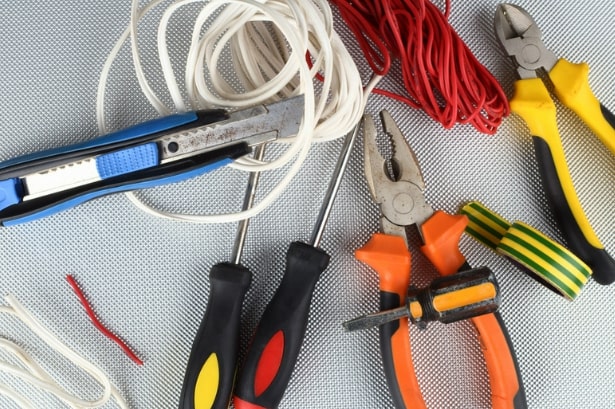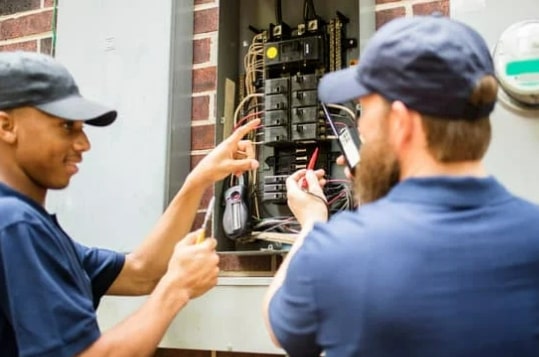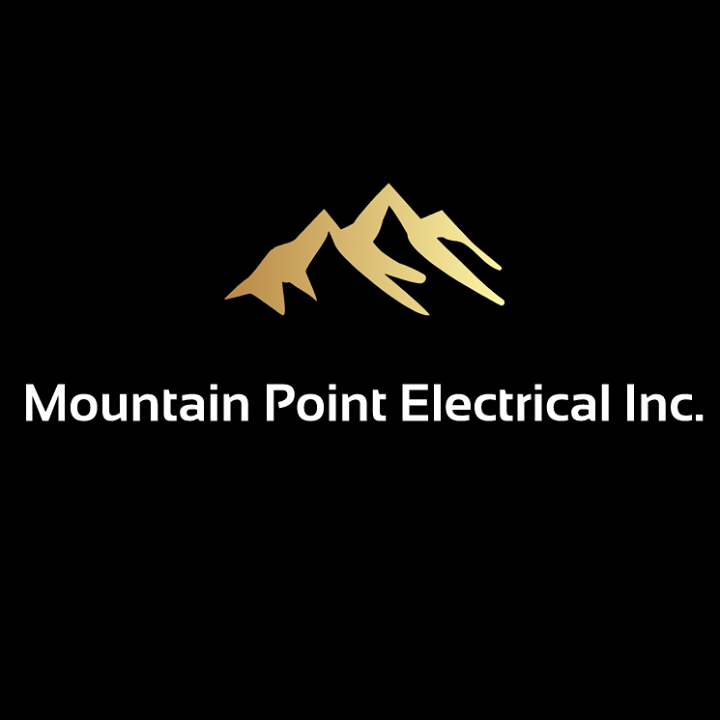Strong power distribution networks are key to efficiently running commercial systems, from office buildings to industrial units. However, the principles and technicalities associated with power distribution can intimidate newbies.
How electricity is created, transmitted, and distributed in commercial settings is a complex topic, but this article will simplify it. From company owners and facility managers to individuals searching for “electrical services near me,” this will lay a solid groundwork for understanding and participating in commercial power distribution.
What is Power Distribution?
Power distribution is the power transfer from a power plant or substation to consumers. Power lines, transformers, substations, and distribution systems are all part of the infrastructure network that carries out energy transmission, transformation, and distribution.
How Does it Work?
- Generation
Power plants create electricity from fossil fuels (coal, natural gas), renewable resources (solar, wind, hydro), or nuclear energy. Electricity is generated as AC at high voltages for effective long-distance transmission.
- Transmission
High-voltage transmission lines carry electricity from power plants to substations near cities and factories. Transmission lines reduce energy losses and maintain voltage over long distances. Transformers step voltage up or down for efficient transmission.
- Substation
Transformers change electricity voltage before distribution. Also, substations control and regulate the energy flow inside the grid by acting as switching points. The substation converts high-voltage transmission lines to distribution voltages.
- Distribution
Distribution lines transport power from substations to homes, businesses, and industries. Depending on geography, population density, and aesthetics, distribution networks use overhead lines, underground cables, or busbar systems. Transformers in utility poles or substations lower consumer voltage.
- Final Use
When the electricity reaches its final destination, it operates various appliances, lighting systems, machines, and devices. End-users include houses, companies, schools, hospitals, factories, and infrastructure. For billing purposes, electrical meters track each customer’s electricity consumption.
Overhead Lines
In the electrical infrastructure, overhead power distribution networks have been there for a long time. The low cost and convenience of installation of overhead lines make them a popular choice in rural and suburban areas. They reliably provide electricity to remote regions, small towns, and agricultural lands.
Technical Aspects
- Conductors and Insulators
Insulators support aluminum or copper conductors in overhead lines, which help to keep electricity from leaking and people safe. Conductivity and environmental resistance depend on the conductor material and insulator design.
- Pole or Tower Design
Utility poles and towers must be designed using height, spacing, and material strength to accommodate the weight of the conductors and endure wind, ice, and seismic stresses.
- Voltage Regulation
Transformers are carefully positioned along overhead lines to control voltage levels and give users a steady electricity supply. Their placement is adjusted according to factors including distance and load requirements.
Advantages
- Efficient Use of Funds. Due to lower labour and material costs of pole or tower construction, overhead wires are cheaper to install than buried cables.
- Easy Access. Overhead lines allow technicians to check and repair components visually without excavation or trenching.
- Flexibility for Future Use. Overhead wires can be easily expanded or adjusted to meet rising power demands or infrastructural improvements for future growth.
Disadvantages
- Exposure to Weather Conditions. Heavy snowfall, lightning, and storms can destroy overhead cables. Conductors that have ice built up on them could become too heavy, which can cause them to droop or even collapse.
- Environmental Impact. The visual impact of overhead lines may diminish the aesthetics and value of properties in picturesque or metropolitan regions.
- Safety Hazards. Damaged or tampered overhead lines can cause electrocution and fire, and they require safety precautions and regular inspections.
Underground Cables
Underground power distribution systems are more discreet and resilient than overhead cables in heavily populated urban and commercial areas. Underground cable burying methods entail encasing insulated wires in conduits or trenches to shield them from physical and environmental hazards.
Important Details
- Cable Types
Different types of insulation, like cross-linked polyethylene (XLPE) or ethylene propylene rubber (EPR), may be used on underground cables. This is based on things like the voltage rating and the weather.
- Conduit Systems
Underground cables are commonly housed in conduit systems, which offer further protection against physical damage and make maintenance or upgrades easier in the future.
- Burial Depth
It’s important to bury wires at a certain depth to prevent frost heave and excavation damage.
Practical Uses
- Metropolitan Areas. Urban regions with dense populations prefer underground cables since overhead wires may be ugly or impractical.
- Commercial Developments. Shopping centres, corporate buildings, and residential communities employ underground wires for aesthetics and reliability.
- High-Voltage Applications. Facilities like data centres, hospitals, and airlines rely on underground cables because they can transmit large voltages.
Pros and Cons of Underground Cables
| Advantages | Disadvantages |
| More resistant to weather, vandalism, and unintentional damage, improving commercial building uptime. | Installation costs more than overhead lines due to higher material costs, labour-intensive installation, and specialized excavation and trenching equipment. |
| Preserves urban architecture and reduces street clutter through minimal visual impact. | Advanced tools and expertise are needed to access buried infrastructure to find and fix cable faults. |
| Lessens the risk of electrocution and electrical fires. | Workers must excavate and trench to install underground cables, which poses risks to ecosystems, soil integrity, and subterranean services and infrastructure. |
Busbar Systems
A busbar system is a flexible and effective way to distribute electricity in commercial and industrial buildings. These systems use copper or aluminum housings to transmit energy to numerous distribution locations in a facility using conductive bars or rails.
- Copper and aluminum are the most used materials for busbars because of their high conductivity and resistance to corrosion.
- Encased in protective housings, busbars are insulated to avoid electrical leakage and guarantee dependability.
- Many busbar shapes and layouts, including single-phase and three-phase configurations, are available to meet the needs of different power distribution systems.
- Accessories, including connections, terminations, and busbar, support help install and operate busbar systems.
Uses
Business Structures
Due to their high power demands and complex electrical layouts, office skyscrapers, hotels, and shopping malls use busbar systems for efficient power distribution.
Industrial Facilities
Busbars are common in industrial facilities and manufacturing plants. They provide dependable power distribution to machinery, motors, and process equipment.
Data Centers
Busbar systems are suited for data centres and IT facilities that need high-density power distribution and little downtime.
Advantages
- Efficiency. Busbar systems reduce energy losses from lengthy cable runs, which lowers voltage dips and boosts system efficiency.
- Flexibility. Busbars may be quickly upgraded to meet changing power needs, building layouts, and equipment configurations. That makes them scalable for commercial applications.
- Space-saving. Installations with limited or expensive physical space might greatly benefit from busbar systems, which require less physical area than cable-based distribution systems.
Disadvantages
- Initial Cost. Busbar systems are more expensive than cable-based systems but save money over time due to their efficiency and low maintenance.
- Complexity. Planning and installing busbar systems requires careful coordination to ensure correct insulation, grounding, overload protection, and electrical code compliance.
- Maintenance Needs. During routine inspections and maintenance, look for corrosion, insulation deterioration, and loose connections to keep busbar systems safe and secure.

Choose an Expert Electrician Today
There are several ways to distribute power in commercial systems, each with pros and cons. Understanding the difficult qualities of overhead lines, underground cables, and busbar systems is important to secure an adequate and reliable power supply in commercial structures.
Regardless of the power distribution options in your area, Mountain Point Electrical will safely meet your needs. Our “electrician near me” team will safely handle all your electrical demands, given our extensive experience and technical knowledge.
Frequently Asked Questions
How does renewable energy affect commercial power distribution?
Renewable energy changes the way we distribute power in commercial settings in a few key ways:
- Keeping Power Steady
Since renewable sources like wind and solar can be unpredictable, the power grid must adjust to stabilize the energy supply. This might involve using batteries to store extra energy when needed.
- Updating Infrastructure
The systems that carry electricity might need updates to handle energy from renewables efficiently, including new tech to better manage the flow of electricity.
- More Local Power
With renewables, businesses can generate their own electricity. This means less reliance on big power plants and more on local sources, changing how power is shared.
How can commercial systems maximize the efficiency of power distribution?
- Automate and integrate smart meters, sensors, and other cutting-edge technology for better monitoring and management of energy flow.
- Encourage users to limit electricity use during peak demand to optimize distribution.
- Combine batteries and other storage devices to balance supply and demand and reduce grid stress.
- Invest in infrastructure upgrades to boost overall reliability and reduce transmission losses.
- Increase energy-efficient appliances, buildings, and industrial processes to lower electricity use.
How can we ensure that our power distribution system continues to function reliably?
For best results, ensure equipment is regularly inspected, tested, and maintained to avoid problems. Also, teach staff how to use equipment correctly and follow safety rules.


